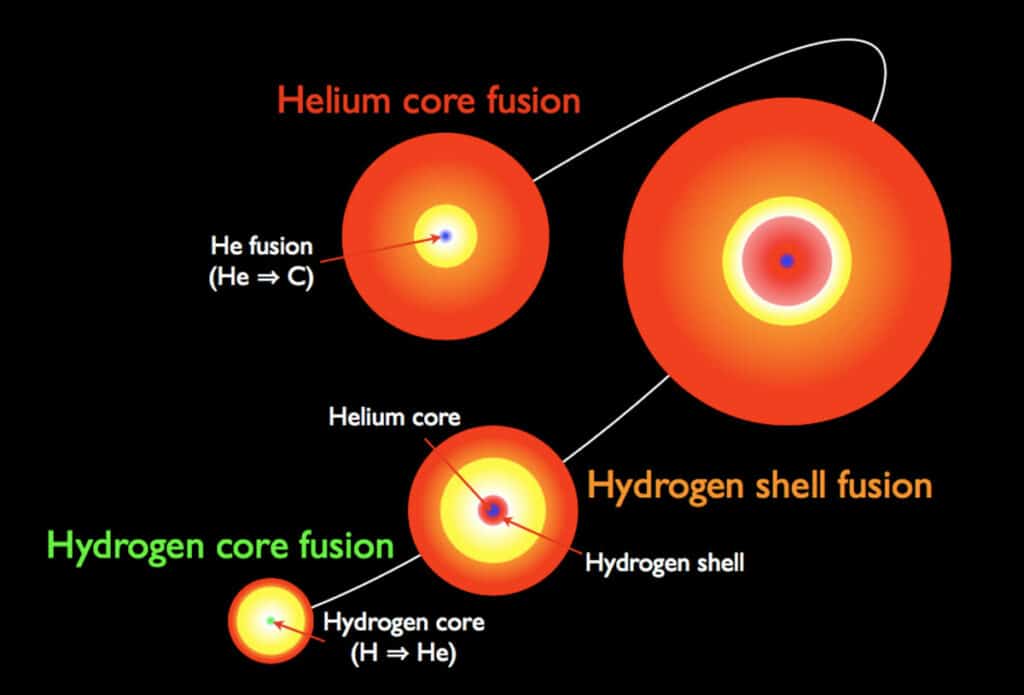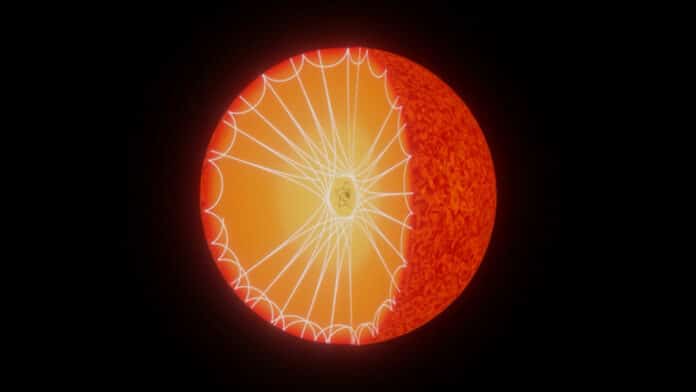Stars in the last stages of stellar development are known as red giants. They burn the hydrogen in the surrounding shell because the hydrogen in their core has run out. The star enters the clump phase once the helium in the core fuses. Clumps of stars are frequently utilized in astrophysical studies as indicators of distance, galaxy density, extinction through the galaxy, and stellar chemical evolution since they have similar observable characteristics.
In a new study, a team of astronomers, mainly from Instituto de Astrofísica e Ciências do Espaço (IA), performed the detailed observational characterization of the deepest layers of clump stars. Their study offers new evidence that red giant stars experience “glitches”—sharp structural variations—in their inner core. This work provides the first characterization of structural discontinuities found in the cores of red-giant stars, making it possible to clearly understand the physical processes taking place in this area for the first time.

The team used data from the Kepler space telescope (NASA) to detect and study waves propagating to the deepest layers of evolved stars.
Lead author Mathieu Vrard, currently a postdoctoral research associate in astronomy at the Ohio State University, said, “By analyzing these variations, we can obtain not only the global parameters of the star but also information on the precise structure of these objects.”
The team analyzed a sample of 359 red giants below a certain stellar mass. They measured several properties and individual oscillation frequencies of each star. They discovered that almost 7% of these stars exhibit structural discontinuities.
The two basic theories that explain how these disruptions might operate are as follows. According to the first, there are “glitches” throughout the star’s evolution, but they are typically very slight and fall short of what astronomers consider a true discontinuity.
The second suggests that these irregularities are “smoothed out” by some unknown physical process that later leads to changes in the structure of the star’s core.
Diego Bossini (IA) explains, “As it turns out, the first scenario is not supported by this study, but more precise data is needed before scientists can confidently subscribe to the second. This study shows the limits of our models, and it allows us to find a way to improve them.”
Journal Reference:
- Mathieu Vrard et al., evidence of structural discontinuities in the inner core of red-giant stars, Nature Communications (2022). DOI: 10.1038/s41467-022-34986-z
